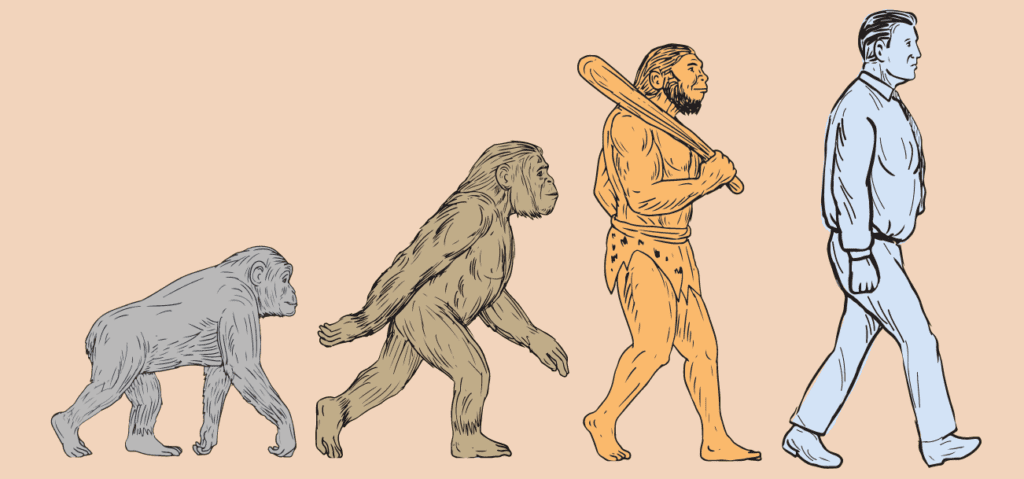Abstract
Human evolution has been studied for many years, and scientists have come upon fossils that show what differentiate our Human Language evolution from any other Hominid ‘language’. Perhaps the evolution of language is the genesis of modern human evolution.
Despite the big percentage of common DNA that humans share with our closest living relatives, the chimpanzees, what is the key factor that enabled our primitive ancestors, such as Homo Neanderthals, Homo Heidelbergensis and the modern humans, Homo Sapiens, to convey complex information and thoughts by a compositional communication system?
The distinguishing factors between human language and animal ‘language’
Animals are capable of communicating between each other in many ways, such as by body language, smells, visual signs or making sounds. However, we know animals can only relay immediate issues like food, danger or threat. Humans via speech can convey information, express thoughts, give orders, ask questions and so on. So, what hinders the language development of our closely related apes? There are many theories about the origin of language, but here are some that came to my attention during research.

Laryngeal Descent Theory
Philip Lieberman, scientist and researcher, proposed this theory by comparing the human vocal tract to chimpanzees. Scientists have concluded that in modern humans, the larynx, also known as the voice box, is positioned lower in the throat than it is in Apes, based on several anatomical analyses of fossils that once belonged to our primitive relatives. This low position allows us to produce different vowels and makes us capable of differentiating between the sounds “hat”, “hate”, and “hide”. On the flip side, Chimpanzees have a tongue, lips, and a jaw similar to humans, but their larynx is positioned higher in their throats. With this information, researchers have determined that our larynx position evolved when Homo Sapiens split off from Chimpanzees on the evolutionary timeline. Homo sapiens were the anatomically modern version of our primitive species, who roamed the Earth between 200,000 and 300,000 years ago.

The Hyoid Bone
Next, let’s discuss the Hyoid bone, the only bone in the body not connected to any others, like fruit (your bone) trapped in Jell-O (muscle tissue). Humans and apes have different versions of the hyoid bone, but our modern human Hyoid bone is unique from any species of australopithecine. It has been inferred that the Hyoid in Chimpanzees helps them screech warning sounds for longer periods of time without getting tired or hyperventilating, but it serves a much different purpose for humans.Our hyoid bone is in the perfect position for speech, working in perfect harmony with the larynx and tongue to let us form complex sounds. If chimpanzees had a hyoid bone in the same position as humans, it’s possible that they might be able to form similar complex sounds to us, but they didn’t evolve in such a manner.

The lack of Laryngeal Air Sacs
The function of laryngeal air sacs in apes has been investigated by examining the correlation between air sac distribution, call rate, duration of vocalizations, and other factors such as body weight. As I said before, the difference between non-human primates’ hyoid position attached to the presence of laryngeal air sacs make them able to call out for a long duration, longer and without hyperventilating, using the air sacs as a resource of air flow. Researchers suggest that air sacs were an ancestral condition, lost during evolution. Scientists argue that this change in vocal anatomy may have provided important features in the evolution of speech.

There have been some projects where people want to teach a chimp how to speak, such as ‘Project Nim’, where chimps were raised the same as human babies, with actual human baby partners. Most of these projects failed since the chimps weren’t able to develop speech language by the time the human baby was starting to talk.
We are aware that this anatomical evolution is the genesis of language evolution, but there are also some cognitive and mental factors that we need to examine to elaborate on why humans are able to speak, and our close relatives are not.





